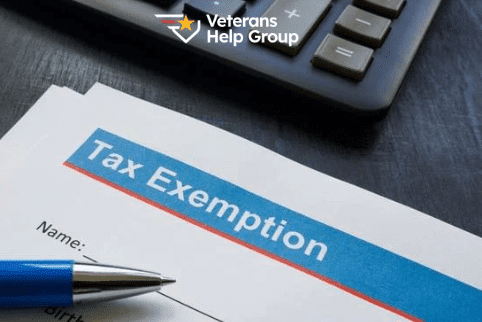VA Ratings Explained
VA disability is different from most other types of disability benefits, in that determining whether the veteran is disabled isn’t just a yes or no question. Instead, a veteran is assigned a disability rating. That rating is based on both the type of disability the veteran suffers from and the extent of their symptoms and limitations.
Your VA disability rating matters, because it determines the amount and type of benefits you receive. So, it’s important to understand how VA disability ratings are assigned and how that impacts your benefits.
How VA Disability Ratings are Determined
Most VA disability ratings are determined based on schedules outlined in the Code of Federal Regulations (CFR). Depending on the condition, the schedule applied may be a general one for a certain family of disorders or a specific one. For example, there is a general rating schedule for mental health disorders, but also a separate one for eating disorders.
The schedule sets forth the possible VA disability ratings for that condition, and also the criteria that must be met for each rating. Though the vast majority of conditions are rated based on these schedules, in some cases the VA may assign an extraschedular rating that is higher than the rating that would be assigned based on the schedules.
Combining VA Disability Ratings
As you can see from the description above, VA disability ratings are assigned based on a specific condition. However, many veterans suffer from more than one service-connected condition or have secondary-connected conditions associated with their main service-connected condition. In that situation, the VA rates each condition separately and then uses a formula to assign a combined rating.
The formula isn’t as simple as adding together the two (or more) ratings. Instead, it works like this:
Say the disability rating for the first condition is 70%. That means the veteran’s capacity has already been reduced by 70% due to that disability. There’s just 30% left to work with.
If the veteran has a second condition that is assigned a disability rating of 20%, that 20% is applied only to the remaining 30%–the part that hasn’t already been deemed disabled. 20% x 30% (.2 x .3) is just 6%.
That 6% is added to the original disability rating of 70%, for a total of 76%. 76% isn’t a possible VA disability rating, though. All ratings are in increments of 10%. So, that number gets rounded–in this case, up to 80%.
Why VA Disability Ratings Matter
Your VA disability rating is the basis for determining your benefits, and the difference between ratings can make a big difference in your monthly compensation.
The possible VA disability ratings start at 0% and go up in 10% increments to 100%. Here’s what a veteran can expect in monthly monetary benefits in 2024, based on disability rating:
- 0% – no monetary benefits are awarded with a 0% rating
- 10% – $171.23/month
- 20% – $338.49/month
- 30% – $524.31/month
- 40% – $755.28/month
- 50% – $1,075.16/month
- 60% – $1,361.88/month
- 70% – $1,716.28/month
- 80% – $1,995.01/month
- 90% – $2,241.91/month
- 100% – $3,737.85/month
Monthly benefits increase as disability ratings increase–and that increase isn’t based on pro-rating full benefits. For example, a veteran with an 80% VA disability rating receives only about 53% of the monetary benefit a veteran with a 100% disability rating receives.
There are also other benefits associated with higher rating levels. For example:
- A veteran with a disability rating of 30% or higher may be entitled to an increase in monthly benefits for eligible dependents, but those at the 10% and 20% level are not.
- A veteran with a disability rating of 50% or higher is entitled to more comprehensive healthcare services, while a veteran with a lower rating receives healthcare services only for service-connected conditions.
Total Disability Due to Individual Unemployability (TDIU)
Under some circumstances, a veteran may be entitled to compensation beyond that usually associated with their disability rating. One of the most common is TDIU. A veteran may receive a TDIU classification if they are deemed unable to earn a living due to their service-connection condition or conditions. However, with rare exceptions, TDIU status can only be assigned if the veteran has either:
- A disability rating of at least 60% for a single service-connection condition, or
- A combined disability rating of at least 70%, with at least one condition rated 40% or higher
Securing the Right VA Disability Rating
The VA assigns your disability rating and that rating is based on federal regulations, but that doesn’t mean the rating assigned is entirely out of your hands. To ensure that you are properly rated, you must:
- Seek treatment for your service-connected and secondary-connected medical conditions and establish a diagnostic and treatment record
- Keep up with your treatment and follow medical advice
- Provide all relevant medical records to the VA
- Consider whether a buddy statement addressing the limitations you face in day-to-day life might help establish the extent of your disability
- Cooperate with the VA by providing any additional information requested, including showing up on time and well-prepared if you are scheduled for a C&P exam
An Experienced VA Disability Benefits Advocate Can Help
At Veterans Help Group, fighting for disabled veterans and their families is all we do. Our advocates have dedicated their careers to helping make sure those who served in our armed forces have access to the disability and related benefits they deserve.
We know the process of putting together documentation for your VA disability claim can be overwhelming, and that small mistakes or oversights can mean delays–or even denial. Fortunately, our advocates have a strong grasp of the ins and outs of the process and know what type of information is required to submit the strongest claim possible. We also have extensive experience handling appeals, requests for adjustment of disability ratings, and other proceedings that may be necessary for a veteran to receive the full benefits available.
To learn more about how we can help, call 855-855-8992 right now, or fill out our contact form here.






